Video marketing plays a crucial role to cater to the growth of your OTT business. With giants like Netflix, Amazon Prime Video, and Disney+ setting the stage, competition is fierce.
The question is, how do you ensure your OTT platform not only survives but thrives in this cutthroat arena? The answer lies in mastering the art of Search Engine Optimization (SEO) tailored specifically for video content.
Imagine having an arsenal of top-notch content, beautifully curated for your OTT platform, and having it effortlessly discovered by your target audience through simple search queries. It’s not a pipe dream—it’s a strategic imperative.
Wondering how to achieve that? Well, read on, as we walk you through the most effective SEO strategies for your OTT platform.
But first, let’s start from the basics!
What Is Video Marketing?
Video marketing refers to the strategic use of videos to promote, communicate, and engage with a target audience. It involves creating and sharing videos across various digital platforms, such as websites, social media, and video-sharing platforms, to convey messages, showcase products or services, and build brand awareness.
This dynamic marketing approach leverages the visual and auditory elements of video content to capture viewers’ attention, convey information, evoke emotions, and drive desired actions, whether it’s making a purchase, subscribing to a channel, or visiting a website.
Video marketing capitalizes on the popularity of video consumption in today’s digital landscape, enabling businesses and individuals to connect with their audiences in a more compelling and memorable way.
What is Video SEO?
Video SEO, or Video Search Engine Optimization, is the practice of optimizing video content to improve its visibility, ranking, and discoverability in search engine results. Similar to traditional SEO for text-based content, Video SEO involves a set of strategies and techniques aimed at enhancing the chances of videos being found by users when they search for relevant topics or keywords on search engines or video-sharing platforms.
By optimizing various elements such as video titles, descriptions, tags, and metadata, as well as considering user engagement metrics like watch time and comments, Video SEO aims to increase a video’s chances of appearing prominently in search results.
The ultimate goal of Video SEO is to attract more organic traffic to videos, expand their reach, and ultimately achieve higher viewer engagement and conversions. This practice recognizes the growing importance of videos in online marketing and aims to leverage their potential to attract and engage audiences effectively.
Why Is Video Marketing Crucial for Streaming Businesses?
Leveraging video marketing isn’t just a choice for your OTT business; it’s a strategic necessity. From capturing attention to driving engagement and loyalty, video marketing holds the key to unlocking the full potential of streaming platforms. Here are five compelling reasons why video marketing is absolutely crucial for streaming businesses:
1. Visual Storytelling in a Digital Age
Humans are hardwired to connect with stories, and video is a medium that excels at delivering narratives in the most engaging and impactful way. For streaming businesses, which rely on captivating content to attract and retain viewers, video marketing offers a dynamic platform to tell stories visually.
Whether it’s the teaser of an upcoming series, a behind-the-scenes look at production, or a heartfelt testimonial from a satisfied subscriber, video allows streaming platforms to forge a genuine and emotional connection with their audience. Partnering with a top digital marketing agency in Dubai can enhance your video marketing efforts, providing expertise to create compelling content and optimize your video marketing strategies for maximum impact in the local market.
2. Unparalleled Engagement
One of the standout features of video marketing is its ability to capture and sustain viewer attention. In a world where attention spans are dwindling, videos have the power to hold audiences spellbound, making them an ideal tool for streaming businesses to showcase their offerings.
Engaging videos, be they trailers, tutorials, or live events, can captivate viewers and encourage them to explore further, sign up for subscriptions, and participate in the platform’s ecosystem.
3. Showcasing Diversity and Originality
Streaming businesses thrive on diversity and originality in their content. Video marketing allows these platforms to vividly showcase their range of offerings, whether it’s a genre-defying series, a collection of classic films, or niche content catering to specific interests.
Through video marketing, streaming platforms can provide glimpses of their content library, enticing potential subscribers with a taste of what’s in store and differentiating themselves from competitors. Explainer video services can elevate these previews into distinctive brand assets that capture attention and reinforce your platform’s unique identity.
4. SEO and Discoverability
In the vast digital ocean, discoverability is paramount. Video marketing, when paired with effective Video SEO strategies and professional SEO services, can significantly enhance a streaming business’s visibility on search engines and video-sharing platforms, helping brands create video ads that stand out.
Videos with well-optimized titles, descriptions, tags, and metadata are more likely to surface in relevant search results, increasing the chances of attracting organic traffic through White Label SEO. This organic reach not only boosts the platform’s brand but also introduces it to potential viewers who might not have otherwise stumbled upon it.
5. Data-Driven Insights
The digital era has ushered in an abundance of data, and video marketing is no exception. Streaming businesses can leverage analytics and metrics to gain deep insights into viewer behavior.
This data-driven approach enables platforms to refine their content strategy, tailor recommendations, and curate personalized experiences for their users. By understanding which videos resonate the most, how long users engage with content, and what triggers conversions, streaming businesses can continually adapt and optimize their marketing efforts.
Top 20 Smart SEO Strategies for Video Marketing for Streaming Businesses
Creating outstanding videos is only half the battle; ensuring they’re discovered by the right audience requires strategic SEO techniques.
Here, we will delve into the top 20 crucial strategies for successful video marketing in the streaming industry:
1. Strategic Keyword Research: Unveiling Viewer Intent

Central to any effective SEO strategy is understanding what your potential viewers are searching for. Knowing how to find keywords is the cornerstone of this understanding. For streaming businesses, this involves diving into the psyche of your target audience and uncovering the phrases they use when looking for content.
Start by brainstorming a list of potential keywords related to your streaming platform’s niche, genres, and offerings. Utilize keyword research tools like Google Keyword Planner, Ahrefs, or SEMrush to uncover search volume, competition, and related keywords. Prioritize long-tail keywords that may have lower search volume but indicate specific intent.
For example, if your streaming platform specializes in classic movies, instead of solely targeting the highly competitive keyword “classic movies,” consider optimizing for long-tail variations like “best classic movies of the 20th century” or “classic black and white films.”
Remember, the goal isn’t just to rank high in search results but to match user intent. Craft your content around the keywords you’ve identified, ensuring that your videos provide valuable information, entertainment, or solutions related to those keywords.
This alignment between keyword intent and video content will not only boost your SEO but also enhance viewer satisfaction.
2. Engaging Video Titles: The Gateway to Clicks
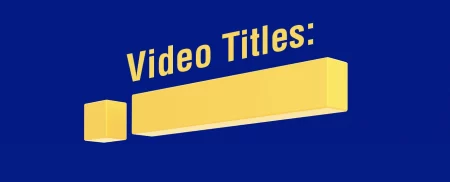
Think of video titles as the front doors to your content. They’re the first impression viewers have of your video, and they play a crucial role in whether someone clicks to watch. Video titles must strike a balance between being descriptive, intriguing, and optimized for SEO.
Incorporate your chosen keyword naturally into the title. However, avoid keyword stuffing, as it can make the title sound unnatural and turn viewers away. Craft titles that promise value, evoke curiosity, or suggest a solution to the viewer’s query. For instance, instead of a plain “Top Classic Movies,” consider a title like “Rediscovering Cinema: 10 Timeless Classic Movies Every Film Buff Must Watch.”
Additionally, keep in mind the optimal length for video titles. Titles that are too long can get cut off in search results, leading to a loss of crucial information. Aim for concise titles that convey the essence of your video within 60 characters.
Remember, your title isn’t just an SEO tool; it’s a persuasive element that influences click-through rates. The more clicks your videos get, the more search engines recognize your content as relevant and valuable, boosting your overall SEO performance.
3. Video Description Optimization: Contextualizing Your Content

Video descriptions are often underutilized real estate for SEO optimization. They provide an opportunity to provide context to your videos, elaborate on the content, and include additional keywords naturally.
Craft comprehensive video descriptions that succinctly summarize the video’s content while incorporating relevant keywords. Start with a concise, attention-grabbing introduction that includes the main keyword. Then, provide a brief overview of what viewers can expect from the video.
As you expand on the description, consider including variations of your primary keyword, related keywords, and long-tail keywords. However, avoid stuffing keywords in a way that sacrifices readability. Aim for a seamless blend of valuable information and strategic keyword placement.
Embed relevant links within the description, such as links to related videos, playlists, or your streaming platform’s website. These links not only guide viewers to more of your content but also enhance your video’s authority and credibility in the eyes of search engines.
Always remember, your video description isn’t just for SEO; it’s a means to engage viewers who want more context about the content they’re about to watch. A well-crafted description can entice viewers to click, watch, and even explore more of your videos.
4. Metadata Tagging: Elevating Visibility through Precision

Tags and categories serve as the metadata’s pillars, standing tall as signposts that guide search algorithms through the labyrinth of digital content. They play a pivotal role in the intricate dance between content creators and search engines, determining how your content is categorized, ranked, and ultimately, discovered.
- At the heart of metadata tagging lies the strategic deployment of keywords. These keywords, encompassing primary and secondary terms, synonyms, and variations, act as signals that inform search algorithms about your content’s essence and relevance.
- An effective metadata tagging strategy encompasses a diverse spectrum of keywords. The use of primary keywords ensures direct alignment with the core theme of your content, while secondary keywords and variations cater to the nuances of different search queries. This variety ensures that your content is visible across a broader range of search scenarios.
- While the significance of maximizing tags might be crucial, it’s important to avoid the pitfall of overloading. Including excessive or irrelevant tags can muddle the clarity of your content’s categorization, leading to unintended search results and a potential dip in user engagement.
- Effective metadata tagging goes beyond mere keyword stuffing. It’s about weaving the threads of metadata seamlessly into the fabric of your content. The metadata should align with the actual content, offering a succinct preview of what viewers can expect.
- Also, search algorithms are becoming increasingly sophisticated, aiming to mimic human understanding. By providing precise and relevant metadata, you assist these algorithms in accurately categorizing your content. This, in turn, results in better visibility and alignment with the intent of users’ search queries.
- Additionally, categories act as the macro-contextual anchors of your content. They guide search algorithms in placing your video within the broader tapestry of digital content. A well-chosen category can significantly influence the types of viewers who encounter your content.
5. Focused Thumbnail Optimization: Inviting Clicks with Visual Appeal

A video’s thumbnail is its virtual storefront, inviting viewers to explore what lies within. It’s often the first impression potential viewers have of your content, and optimizing thumbnails for both aesthetics and SEO can significantly impact click-through rates.
- A thumbnail should accurately represent the video’s content to prevent misleading viewers and disappointing them with a mismatched experience. Ensure that your thumbnail aligns with the video’s central theme or message.
- Invest in high-quality visuals for your thumbnails. Crisp and compelling imagery not only piques interest but also signifies professionalism and attention to detail.
- While a thumbnail should primarily rely on imagery, incorporating concise text overlay can further clarify the video’s subject matter or highlight its key value proposition. However, ensure the text is legible, succinct, and doesn’t overwhelm the visual.
- Emotions play a significant role in viewer engagement. Thumbnails that evoke curiosity, excitement, or intrigue are more likely to drive clicks. Consider using facial expressions or dynamic visuals that evoke emotions relevant to your content.
6. Transcript and Closed Captions: Enhancing Accessibility and SEO

Transcripts and closed captions are more than just accessibility features; they’re potent tools for SEO optimization. Search engines can’t “watch” videos, but they can “read” text. By providing text-based content alongside your videos, you make your content more comprehensible to both viewers and search algorithms.
- Transcripts: A transcript is a written version of the video’s spoken content. It not only benefits viewers who prefer reading or have hearing impairments but also serves as an indexable text for search engines. When creating transcripts, you can use an free audio file to text converter to streamline the process. These tools can transcribe your video’s audio into text, saving you time and effort. Just ensure you proofread and edit the transcript for accuracy before uploading it.
- Closed Captions: Closed captions synchronize text with the video’s audio, making it accessible to viewers who are deaf or hard of hearing. They also cater to viewers in environments where sound isn’t feasible, such as public spaces. The presence of closed captions enhances user experience, engagement, and SEO.
Including transcripts and closed captions provides search engines with textual content to index, boosting your video’s chances of appearing in relevant search results. Search algorithms can analyze the text for keywords, enhancing the overall SEO of your content and aligning with the latest SEO trends.
7. Video Sitemaps: Guiding Search Engines to Your Content

A video sitemap is like a roadmap for search engines, providing them with structured information about the videos on your website. It’s a specialized version of a sitemap that is tailored specifically for video content. Video sitemaps enable search engines to understand the content, context, and relationships between videos on your platform, ultimately enhancing their discoverability in search results.
Search engines can’t watch videos; they rely on metadata to comprehend what a video contains. A video sitemap serves as a bridge between your video content and search engines, ensuring that your videos are accurately indexed and ranked.
Video sitemaps typically employ structured data markup formats like Schema.org’s VideoObject. This markup provides detailed information about each video, such as its title, description, duration, thumbnail, and embedding information.
Once your video sitemap is created, it needs to be submitted to search engines like Google through their respective tools, such as Google Search Console. This step ensures that search engines are aware of your video content and can effectively index it.
8. Optimization: Maximizing Visibility and Engagement

Optimization is the main pillar of effective video marketing. It encompasses a range of techniques aimed at enhancing your videos’ visibility, user engagement, and overall performance.
- Quality Content Creation: The foundation of optimization lies in creating high-quality, engaging videos that resonate with your target audience. The better your content, the more likely it is to be shared and linked to, amplifying its reach. With expert content creation services, you consistently produce this caliber of material, increasing the likelihood it will be shared, linked, and widely amplified.
- Video SEO: Strategic keyword research, engaging video titles, and well-crafted descriptions play a pivotal role in Video SEO. By integrating relevant keywords into your content, you increase the chances of your videos appearing in relevant search results.
- User Engagement Metrics: Search engines consider user engagement metrics like watch time, likes, shares, and comments as indicators of content quality. Content that garners higher engagement is typically rewarded with better visibility in search results.
- Video Length and Format: Tailoring video length to match viewer preferences is crucial. While short videos might be preferred for quick consumption, longer videos can provide in-depth value. Additionally, considering various video formats like tutorials, interviews, and vlogs can diversify your content offerings.
9. Cross-Platform Promotion: Amplifying Reach and Engagement

Cross-platform promotion involves strategically sharing your video content across different online channels to maximize its reach and engagement potential.
- Social Media Amplification: Social media platforms like Facebook, Instagram, Twitter, and LinkedIn offer fertile ground for video promotion. Customizing your content or buy social signals for each platform’s audience and format can significantly boost engagement.
- Email Marketing: Leverage your email subscriber base to share your video content. Incorporate compelling thumbnails, enticing descriptions, and clear calls-to-action to encourage clicks and views. Utilize free email marketing tools to streamline this process and enhance your outreach.
- Website Integration: Embed your videos on your website or blog to provide additional value to visitors. Well-placed videos can enhance the user experience, extend the time users spend on your site, and potentially reduce bounce rates.
- Collaboration and Influencer Marketing: Collaborating with influencers or other content creators in your industry can introduce your videos to new audiences. Influencers can lend credibility and amplify your reach through their established networks.
10. Social Media Integration: Boosting Reach through Synergy

Social media platforms have transformed from mere communication channels to powerful hubs of engagement, discovery, and community-building. Integrating video content with your social media strategy creates a synergy that enhances your streaming business’s reach and impact.
- Tailored Content: Each social media platform has its unique format and audience. Adapt your video content to match the preferences of the platform you’re using. For instance, Instagram’s IGTV might cater to shorter, more visually appealing videos, while YouTube allows for longer, in-depth content.
- Native Uploads: While sharing YouTube links is common, consider uploading videos natively to platforms like Facebook and Instagram. Native videos auto-play and receive more prominent placement, leading to higher engagement rates.
- Engaging Thumbnails: Create compelling and contextually relevant thumbnails for your social media videos. Thumbnails serve as the first point of contact and significantly influence whether users click to watch.
- Cross-Promotion: Leverage your social media platforms to cross-promote your videos. Share teaser clips, behind-the-scenes content, or engaging snippets that entice viewers to explore your full video content.

11. Influencer Collaborations: Leveraging Trust and Credibility

Collaborating with influencers who have established credibility and a dedicated following can be a game-changer for your video marketing strategy.
- Authenticity and Alignment: Choose influencers whose values align with your streaming business and target audience. Authenticity is crucial; viewers can quickly discern inauthentic endorsements.
- Diverse Content Formats: Collaborations need not be restricted to sponsored posts. Consider joint video projects, interviews, takeovers, or co-hosted live sessions to diversify content and attract wider audiences.
- Increased Reach: Influencers bring their followers into your sphere, introducing your video content to new and engaged audiences. Their endorsement lends credibility, potentially leading to higher engagement rates.
- Storytelling Impact: Influencers are adept storytellers. They can narrate your streaming business’s story in a way that resonates deeply with their followers, generating genuine interest.
12. User Engagement Analytics: Unveiling Insights for Evolution

The journey of video marketing isn’t complete without the invaluable insights derived from user engagement analytics. User analytics serve as a compass, guiding your strategy toward optimal engagement and refinement.
- Metrics That Matter: Track metrics such as view count, watch time, engagement rate, likes, shares, comments, and click-through rates. These metrics provide insights into how viewers interact with your content.
- Audience Demographics: Understand your audience’s demographics, including age, gender, location, and interests. This knowledge helps tailor content to suit their preferences and expectations.
- Content Performance: Analyze which types of videos perform best and resonate most with your audience. This data aids in refining your content strategy and focusing on what works.
- Iterative Evolution: Video marketing is an iterative process. Regularly analyze analytics to identify patterns, trends, and opportunities for improvement. Adjust your strategy based on these insights to continually enhance engagement.
13. A/B Testing: The Science of Optimization

A/B testing, often referred to as split testing, is a methodical approach to optimizing content based on data-driven insights. It involves presenting two versions of a particular element—such as video thumbnails, titles, descriptions, or even video content—to different segments of your audience and analyzing which version performs better.
- Controlled Experimentation: A/B testing involves a controlled comparison between two variables, typically labeled as A and B. For instance, you might test two different video thumbnails: one with a vibrant color scheme and another with a contrasting color scheme.
- Key Metrics: Metrics like click-through rates, watch time, engagement rates, and conversion rates serve as the barometers for success. By comparing the performance of the two variants, you can identify which version resonates more with your audience.
- Incremental Refinement: A/B testing isn’t a one-time endeavor. It’s an iterative process that enables you to incrementally refine your video marketing strategy. Over time, small improvements add up, enhancing overall engagement and effectiveness.
- Thumbnail and Title Testing: Thumbnails and titles are particularly impactful elements to test. A slight change in thumbnail design or wording in the title can drastically alter viewer behavior and click-through rates.
14. Continuous Content Updates: Embracing Agility

The digital landscape is characterized by its ever-changing nature. To remain relevant and engaging, streaming businesses must embrace the concept of continuous content updates.
- Freshness Factor: Search engines and algorithms often prioritize fresh content. Regularly updating your video library signals to both viewers and algorithms that your platform is vibrant and up-to-date.
- Diversified Offerings: Continuous updates allow you to diversify your content offerings. This can include new releases, curated playlists, trending topics, and adaptations to changing viewer preferences.
- User Expectation: In a world where content consumption is constant, viewers come to expect fresh content. Meeting this expectation enhances viewer satisfaction and encourages repeat visits.
- Evergreen and Timely Content: Strive for a balance between evergreen content that remains relevant over time and timely content that addresses current trends or events. This balance ensures sustained engagement.
15. High-Quality Content Production: The Bedrock of Engagement

High-quality content production is a necessity to improve your audience engagement.
- Professional Aesthetics: Investing in professional-grade production values—from camera quality and lighting to audio and editing—elevates the visual and auditory experience for viewers.
- Captivating Storytelling: Content with a compelling narrative captivates viewers and encourages them to stay engaged. Storytelling creates an emotional connection and helps retain attention.
- Educational Value: Beyond entertainment, educational content holds significant value. Tutorials, explainers, and insights provide viewers with valuable takeaways, increasing the likelihood of engagement and sharing.
- Consistent Branding: High-quality content extends to consistent branding. Ensure your streaming business’s corporate identity, including logos, color schemes, and typography, is reflected across all videos.
16. Localized Content Strategy: Speaking to Diverse Audiences

In a globalized world, audiences are as diverse as they are dynamic. A one-size-fits-all approach to video content can fall flat in resonating with audiences from different regions, cultures, and languages. A localized content strategy involves tailoring your video marketing efforts to the nuances and preferences of specific local markets.
- Cultural Relevance: Different regions have distinct cultural norms, traditions, and sensitivities. A localized content strategy ensures your content resonates with the cultural context of your target audience.
- Language Adaptation: Localized strategy often involves providing subtitles, captions, or dubbing in the local language. This not only removes language barriers but also conveys a commitment to engaging with the local audience on their terms.
- Regional Trends: What’s trending in one region might not hold the same appeal in another. A localized approach allows you to tap into regional trends and create content that aligns with local interests.
- Targeted Promotions: A localized content strategy extends beyond the content itself. It involves tailoring your marketing and promotional efforts to reach audiences in specific regions through localized campaigns and messaging.
17. Voice Search Optimization: Connecting through Conversations

As voice-activated virtual assistants and smart devices become increasingly prevalent, voice search optimization emerges as a strategic imperative. Optimizing your video content for voice search ensures your streaming platform remains accessible and discoverable in this new era of search behavior.
- Natural Language Keywords: Voice searches tend to be more conversational in nature. Optimize your video titles, descriptions, and tags with natural language keywords that mirror how people speak.
- Long-Tail Phrases: Voice searches often involve longer phrases or questions. Incorporate long-tail keywords that address common queries your target audience might have.
- Structured Data Markup: Implement structured data markup, such as Schema.org, to provide search engines with context about your content. This markup enhances the likelihood of your content being featured in voice search results.
- Direct Answers: Anticipate user questions and provide direct answers in your content. Voice search devices often read out featured snippets, making your content more likely to be the source of information.
18. Interactive Video Elements: Engaging Through Participation

In an age of information overload, interactive video elements breathe life into your content by encouraging viewer participation. These elements transform passive viewers into active participants, fostering engagement, retention, and memorable experiences.
- Quizzes and Polls: Embed quizzes or polls within your videos to engage viewers’ critical thinking and decision-making. Quizzes can test their knowledge, while polls gather their opinions and preferences.
- Hotspots and Annotations: Use clickable hotspots or annotations to provide additional information or context within the video. This empowers viewers to explore aspects of the content that interest them the most.
- Choose-Your-Adventure: Create interactive videos where viewers can choose different paths or outcomes, shaping the narrative according to their choices. This immersive experience fosters a deeper connection with the content.
- Call-to-Action (CTA) Overlays: Overlay CTAs that prompt viewers to take specific actions—such as subscribing, visiting a website, or making a purchase. Interactive CTAs capitalize on viewers’ engagement and interest.
19. User-Generated Content (UGC): Empowering the Audience Voice

User-Generated Content, often hailed as the voice of the audience, places the spotlight on viewers-turned-creators. This strategic approach involves inviting and curating content contributions from your audience, transforming them into active participants rather than passive consumers.
- Fostering Community: UGC cultivates a sense of community and belonging. It empowers viewers to be co-creators, fostering a deeper emotional connection with your streaming platform.
- Diverse Perspectives: UGC introduces a diversity of perspectives, experiences, and content styles that resonate with various segments of your audience. It enriches your content library with authenticity and variety.
- Authentic Engagement: UGC is often perceived as more authentic and relatable than branded content. It resonates with viewers who value peer recommendations and real-life experiences.
- Challenges and Campaigns: Implement UGC challenges and campaigns that encourage users to submit content based on specific themes or prompts. These initiatives spark creativity and boost engagement.
- Moderation and Curation: While UGC offers immense benefits, it requires moderation and curation to ensure the quality and alignment with your platform’s values. Establish clear guidelines to maintain the desired content standards.
- User Recognition: Recognize and celebrate user-contributors. Highlighting their content can incentivize participation and create a sense of pride among the community.
20. Collaborative Playlist Creation: Curating Content Symphony

Collaborative Playlist Creation amplifies the communal spirit by enabling viewers to collectively curate playlists, transforming content consumption into a shared experience.
- Diversity of Choices: Collaborative playlists offer a variety of content choices, reflecting the collective tastes and preferences of the community. This diversity ensures that the playlist resonates with a broader audience.
- Social Interaction: Engaging with a collaborative playlist feels like participating in a social event. Viewers can add, remove, or reorder content, fostering a sense of co-creation and interaction.
- Participation Fosters Engagement: When viewers actively participate in curating a playlist, they are more likely to engage with the content. This engagement extends beyond watching, as users become invested in the playlist’s progression.
- Discovery and Exploration: Collaborative playlists introduce viewers to content they might not have discovered otherwise. The communal curation brings hidden gems to the forefront, enhancing the content discovery experience.
- Personalization: Collaborative playlists can be tailored to specific themes, moods, or genres. This personalization allows viewers to craft playlists that resonate with their preferences and current interests.
- Periodic Updates: Regularly update collaborative playlists to keep them fresh and reflective of evolving viewer preferences. This practice ensures sustained engagement and excitement.
The Best Examples of Video Marketing from the Streaming Leaders
1. Netflix: Mastering Personalization and Original Content
Netflix, the undisputed streaming giant, has revolutionized video marketing through its emphasis on personalization and original content.
- Personalized Trailers: Netflix’s personalized trailers showcase the platform’s dedication to catering to individual viewer preferences. By crafting trailers that highlight content tailored to a viewer’s history and interests, Netflix engages audiences more effectively.
- Original Content Buzz: Netflix’s strategic emphasis on original content has reshaped the streaming landscape. With captivating teaser trailers and behind-the-scenes content, the platform builds anticipation for exclusive releases, encouraging subscriptions and viewer loyalty.
- Data-Driven Recommendations: Leveraging data analytics, Netflix suggests content based on viewers’ previous choices, watching patterns, and genres. This strategy creates a sense of personalized curation, enhancing user engagement.
2. Hulu: Harnessing Timely Campaigns and Limited Releases
Hulu’s savvy use of timely campaigns and limited releases has garnered attention and engagement across the streaming spectrum.
- Timely Releases: Hulu often capitalizes on current events, trends, or cultural moments to launch timely campaigns. This strategy resonates with audiences seeking content that aligns with the zeitgeist.
- Exclusive Sneak Peeks: Offering exclusive sneak peeks or limited-time access to new episodes or shows generates a sense of urgency and FOMO (fear of missing out), enticing users to subscribe and engage quickly.
- Collaborative Fan Engagement: Hulu engages with its fan community by creating campaigns that encourage user-generated content, reviews, and discussions. This collaborative approach fosters a sense of belonging and loyalty among viewers.
3. Amazon Prime Video: Seamless Integration with E-commerce
Amazon Prime Video merges the world of entertainment and e-commerce, utilizing its vast ecosystem to drive video engagement and sales.
- Bundled Packages: Amazon Prime’s strategy of bundling video streaming with its e-commerce benefits amplifies the perceived value for subscribers. The seamless integration encourages users to explore both services.
- X-Ray Feature: Amazon Prime Video’s X-Ray feature offers real-time information about the actors, music, and trivia while watching a show or movie. This interactive element enhances viewer engagement and provides an immersive experience.
- Data-Driven Personalization: Similar to its e-commerce approach, Amazon Prime Video leverages user data to personalize recommendations, promoting shows and movies based on viewers’ shopping and viewing habits.
4. Disney+: Nostalgia-Fueled Marketing and Exclusive Universes
Disney+ leverages nostalgia and exclusive universes to create an emotional connection with audiences and maintain loyalty.
- Nostalgic Content Library: Disney+ taps into the emotional connection audiences have with beloved classics. By offering an extensive library of timeless content, the platform appeals to both new and returning viewers.
- Cinematic Universe Expansion: Disney+ extends the stories of its popular franchises into episodic series, creating a sense of continuity and engagement within dedicated fan bases.
- Iconic Brand Identity: The Disney brand carries immense weight and recognition. Disney+ capitalizes on this identity to attract subscribers seeking a curated platform that embodies quality and nostalgia.
The Bottom Line
In the fiercely competitive OTT industry, video marketing isn’t just a strategy; it’s the very essence of success. As the digital landscape continues to shift, capturing the attention of audiences and standing out amidst the competition requires a well-crafted video marketing approach.
The strategies employed by industry leaders like Netflix, Hulu, Amazon Prime, and others underscore the importance of personalized content, strategic collaborations, and engaging interactive elements. For OTT platforms, the journey towards prominence demands the adoption of the most effective video marketing strategies.
In this pursuit, one solution stands out as a comprehensive guide to success – Muvi One. The multifaceted suite of tools offered by Muvi One empowers OTT businesses to craft an impactful video marketing strategy that goes beyond mere content creation. From dedicated SEO tools to ensure your content is discoverable, to audience engagement tools that foster community and loyalty, Muvi One covers all aspects of a successful video marketing campaign.
The inclusion of a User-Generated Content (UGC) portal cultivates viewer participation, turning them into contributors and co-creators, thereby enhancing engagement.
Furthermore, what sets Muvi One apart is its ability to empower you to launch your very own branded OTT platform without the need for any coding expertise. This democratizes the realm of digital entertainment, enabling businesses to enter the market swiftly and seamlessly.
In a world where engagement, visibility, and user interaction are paramount, Muvi One not only equips you with the best-in-class video marketing strategies but also empowers you to manifest your vision of an OTT platform effortlessly.
Take a 14-day free trial now to explore more.

FAQs
- Why is SEO important for OTT platforms?
SEO is vital for OTT platforms because it enhances discoverability. In a crowded digital space, effective SEO strategies improve your platform’s visibility, attracting more viewers and subscribers. It ensures your high-quality content doesn’t remain hidden but finds its rightful audience.
- What are the key SEO techniques for video marketing on OTT platforms?
Essential SEO techniques include optimizing video titles, descriptions, and tags, ensuring fast loading times, creating compelling thumbnails, and implementing user-friendly metadata. Additionally, user engagement and mobile optimization are crucial for ranking higher in search results.
- How can I choose the right keywords for video SEO on my OTT platform?
Start by researching popular keywords related to your content using tools like Google Keyword Planner. Focus on long-tail keywords specific to your niche. Regularly monitor keyword performance and adjust your strategy based on user search trends and platform analytics.
- Are backlinks relevant for video SEO on OTT platforms?
Backlinks, though less common for video SEO, can still contribute to your platform’s authority. High-quality, relevant backlinks from reputable sources can boost your search engine rankings. However, the primary emphasis should remain on optimizing video content and metadata.
- How can I improve user engagement for better SEO on my OTT platform?
Foster user engagement by encouraging comments, likes, and shares. Respond to user comments and feedback promptly, as engagement signals positively influence search rankings. Additionally, create playlists, recommend related content, and use end screens to keep viewers engaged within your platform.
- Is mobile optimization important for video SEO on OTT platforms?
Absolutely! Mobile optimization is critical. With a growing number of users accessing content via smartphones and tablets, a mobile-friendly design and responsive video player are essential. Google also prioritizes mobile-friendly sites in its search rankings, making it a key SEO factor for OTT platforms.
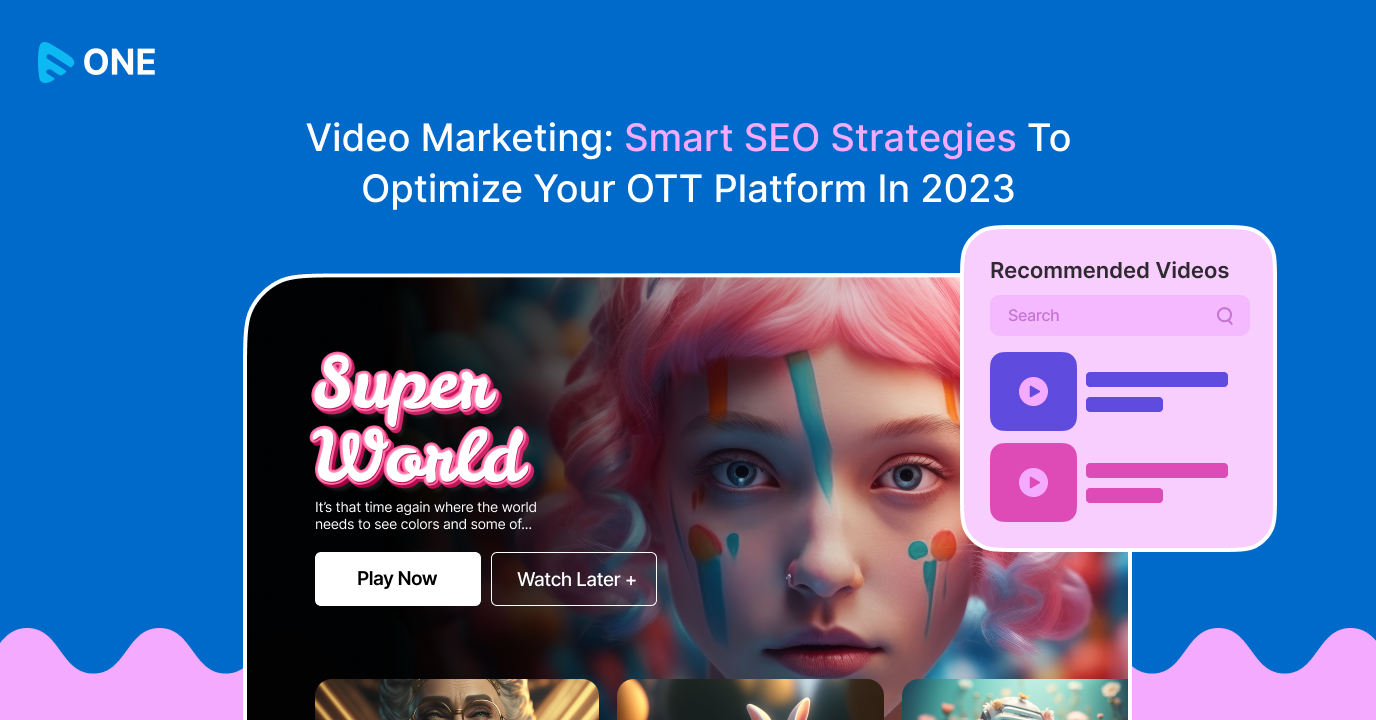

























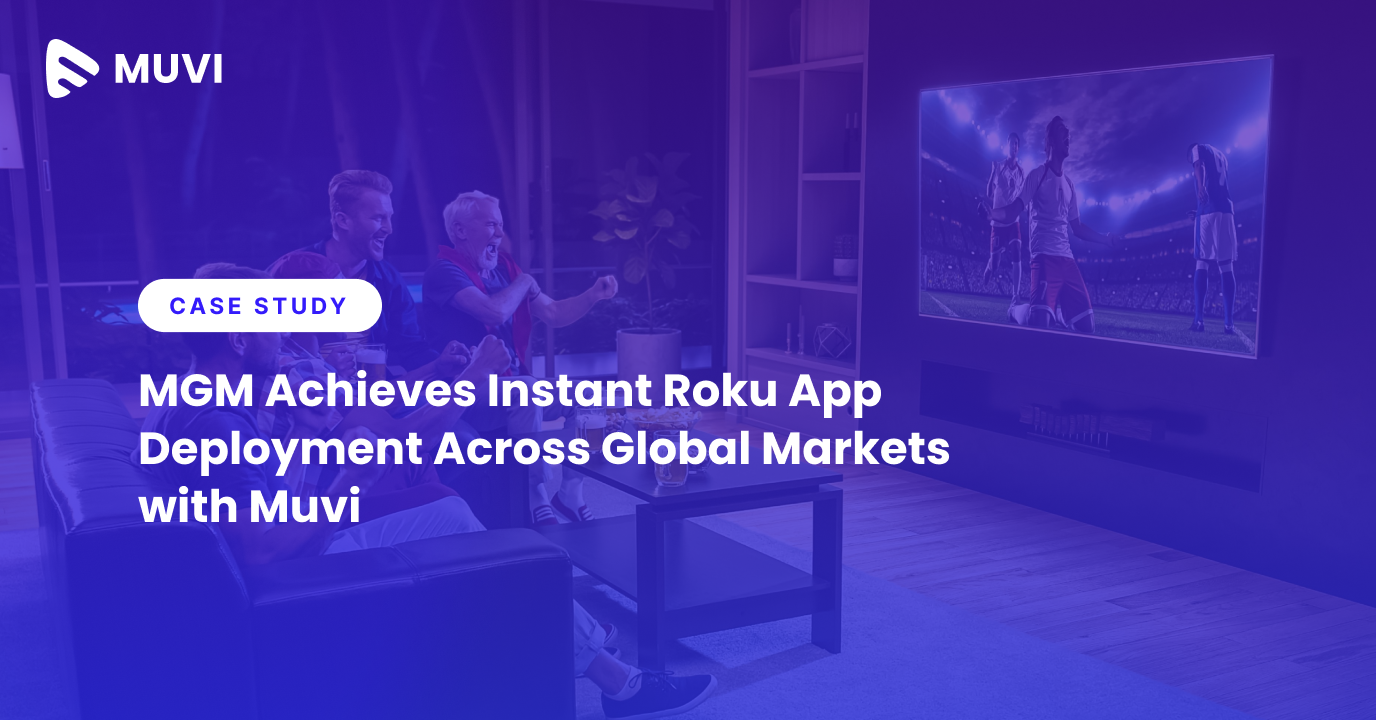




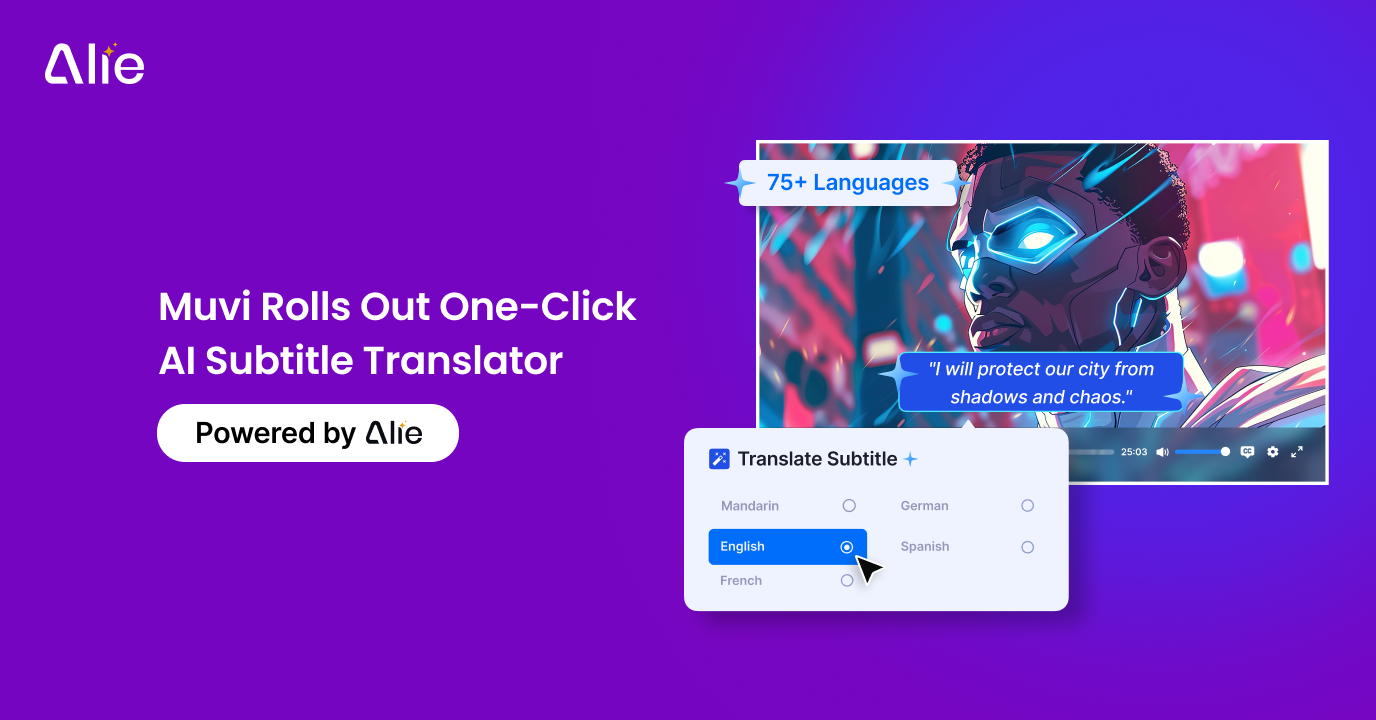
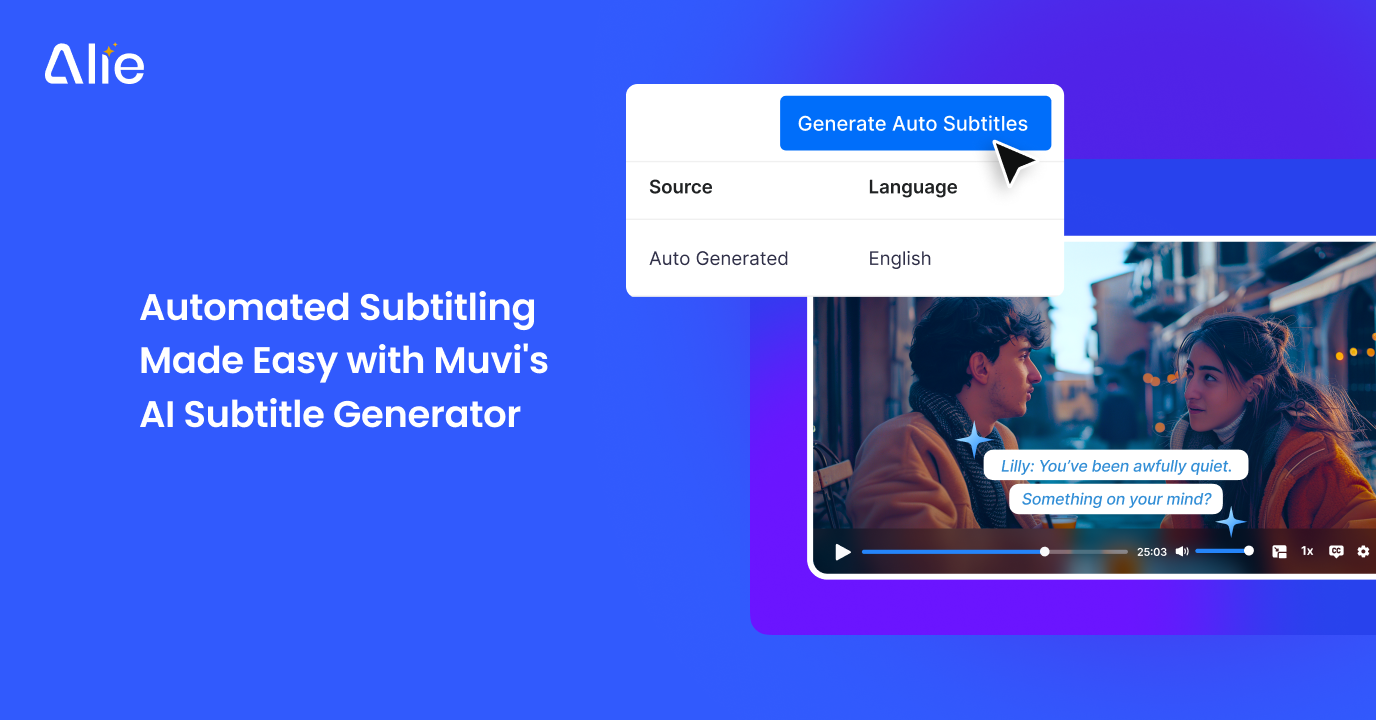
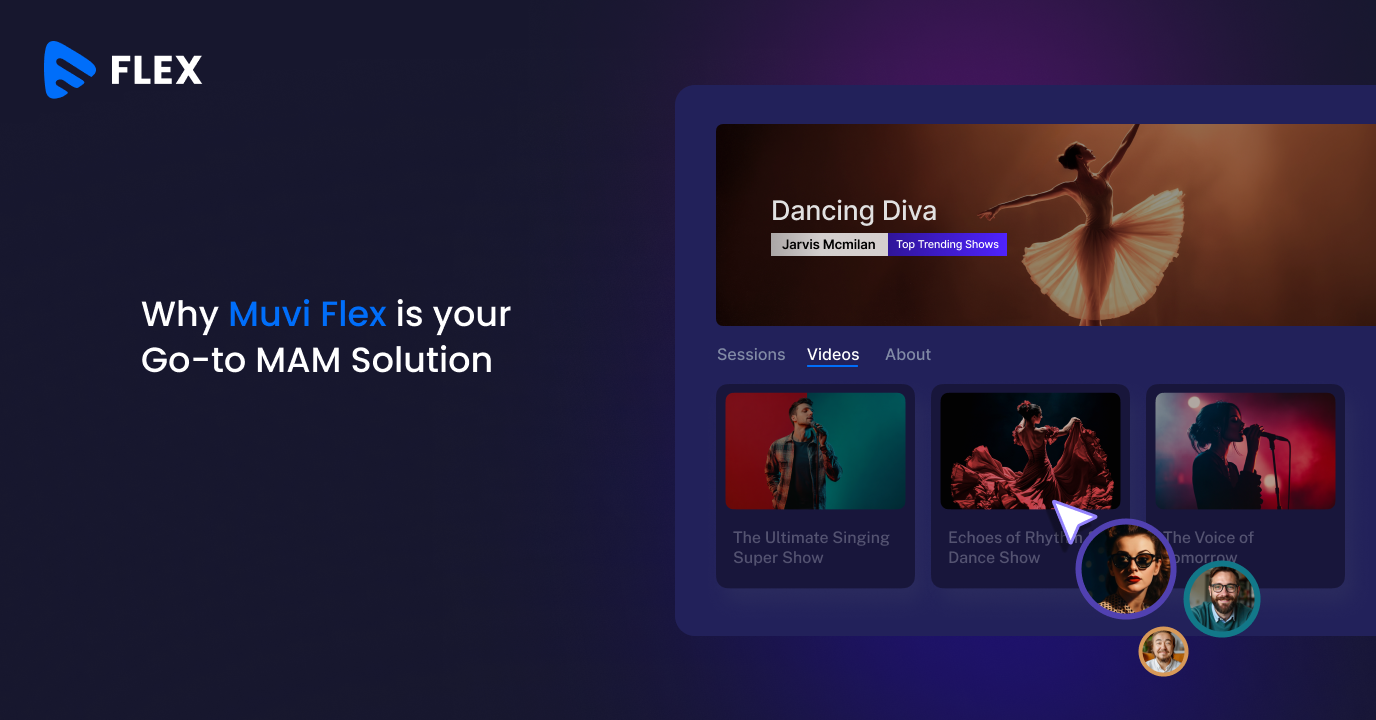



Add your comment